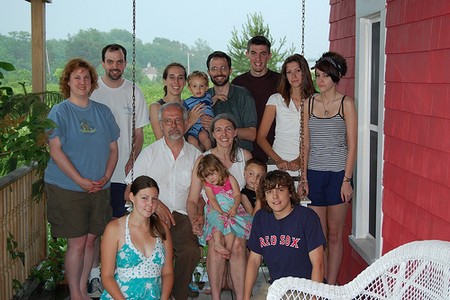What has historically been regarded as the “traditional” or “nuclear” family, with mother, father, and baby makes three, is not necessarily today’s reality. Dad may no longer go out to work, mom may no longer stay home, and baby may not have two parents living in the household.
The traditional family is now defined (by Statistics Canada) as being
- a male worker and a female homemaker with or without children;
- a male worker and a female worker with or without children;
- a single parent with children;
- a parent with children and a stepparent.
Other family configurations are regarded as nontraditional. Here are some modern realities in family structure:
- More families than ever have experienced divorce, remarriage, or children with stepbrothers and stepsisters, or half-siblings.
- Single mothers make up 27 percent of new mothers.
- More grandparents bring up children than ever before, often because the mother is young and single.
- More and more people leave unsatisfactory relationships.
- More women give their ex-husbands custody of their children than ever before.
- One survey suggests that as a result of either death or divorce, at least 1.5 million single fathers in the United States care for about 3.5 million children. One in three marriages ends in divorce. More and more fathers get custody of their children. In Canada, in 1991, of 954,710 single-parent families, 168,240 were headed by males.
- More than 50 percent of new mothers will be in the labor force before the child reaches school.
- More partners in same-sex relationships have children than ever before. Often a partner will assume a parenting role to a child of a partner. Sometimes a partner will adopt as a single parent. Sometimes a partner may choose to have a biological child independently.
- Parenting is a bisexual word that indicates the parent-like activities performed in a family that has children. Parents perform the expected legal and cultural responsibilities of raising children. Parenting can be done by parents of either sex, or by others in that role.
- More men now leave the labor force to become “house-husbands.” This may be the result of downsizing, unemployment, self-employment, or a mother’s successful career. Dad may not be the primary breadwinner, either by choice or by economic necessity. Many formerly middle-class men have experienced a downward employment spiral. More and more families struggle financially.
- United States has the highest rate of child poverty in the industrialized world, and Canada has the second-highest rate.
These are all major stressors. As well, modern families often come under stress from outside as others try to come to grips with the new realities. Institutions such as schools, other parents, and cultural variables within a community—such as different religious and ethnic backgrounds—can put pressure on all members of a family. It is important to focus on the positive aspects of family life, no matter how the structure is defined, where children are raised in the spirit of love, caring, nurturing, mutual support, and devotion, which add to life’s joy and purpose.
